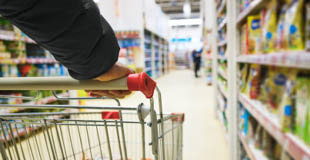Subsidiaries of L Brands
- Bath & Body Works
- PINK
- Victoria’s Secret
Key Findings
- L Brands (PINK, Victoria’s Secret, Bath & Body Works) has a public safer chemicals policy. The policy requires apparel sold by Pink and Victoria’s Secret to meet OEKO-TEX 100 certification, which restricts 14 chemicals of high concern. Alternatively, smaller suppliers can ensure they meet the requirements through third-party testing. All apparel must comply with the Zero Discharge of Hazardous Chemicals (ZDHC) manufacturing restricted substances list (MRSL).
- The company has also banned polyvinyl chloride (PVC), a plastic of environmental health concern, in Bath & Body Works packaging.
- Although L Brands requires full chemical ingredient disclosure from suppliers for Victoria’s Secret Beauty, PINK and Bath & Body Works personal care products, the company does not currently have a beyond restricted substance list (BRSL) for formulated products sold under these brands.
Recommendations for L Brands
- L Brands should expand its safer chemicals policy for apparel products to ensure that all PFAS, toxic flame retardants, and phthalates are addressed, in addition to those that are already restricted. The company should also address formulated products that it sells by developing a public written safer chemicals policy, developing and enforcing a public beyond restricted substance list (BRSL), and setting public quantifiable goals with clear timelines for reducing and eliminating chemicals of high concern (CHCs) in these products, including any PFAS and phthalates that may be in them.
- The company should eliminate other plastics of environmental health concern (PEHCs) besides PVC and should publicly disclose the alternatives used to replace CHCs after eliminating them. L Brands should also take swift action to eliminate and safely replace key chemicals of concern from the beauty products of environmental justice concern that it sells.
- The company should become a signatory to the Chemical Footprint Project and pilot it with key private label suppliers.
How does L Brands compare to its competitors?
Analysis of L Brands
Oversight: Established management responsibilities and incentives
Disclosure: Requires suppliers to report use of chemicals in products to retailer
Action: Reduced or eliminated chemicals of high concern (CHCs) or plastics of environmental health concern (PEHCs) within the last three years
Safer Alternatives: Evaluates safer alternatives, avoids regrettable substitutes
Transparency: Demonstrates a commitment to transparency and public disclosure
Third-party Standards: Promotes credible third-party standards for safer products
Extra Credit:
Joint Announcement: Public commitment demonstrated through joint announcement
Continuous Improvement: Shows continuous improvement by steadily expanding safer chemicals policy
Collaboration: Actively participates in collaborative process to promote safer chemicals
Impact Investment: Investing financial resources into independent research into safer alternatives and/or green chemistry solutions




